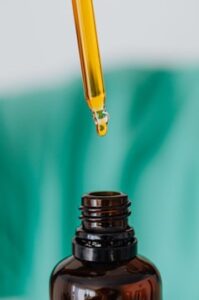More and more trans women and crossdressers long to have their own long hair. Wigs are great as part of an instant feminine transformation but having your own hair is quite different. Do you dream of having thick and luscious locks that turn heads wherever you go? Look no further! In this article, we will uncover the secrets to boosting natural hair growth and achieving the hair of your dreams.
Of course most persons embarking on a male to female transition journey will naturally grow longer and thicker hair as a result of Hormone Replacement Therapy but there are other means to help you. From simple lifestyle changes to targeted hair care routines, we have compiled a list of five essential tips that will help you transform your hair from thin to thick. Whether you have always struggled with thin hair or have noticed a recent decline in hair volume, these tips are sure to make a noticeable difference. Get ready to unleash your hair’s full potential and enjoy the confidence that comes with having a mane that commands attention. Say goodbye to thin hair and hello to thick and beautiful locks with these game-changing tips!
Understanding natural hair growth
Before diving into the tips for boosting natural hair growth, it’s important to have a basic understanding of how hair grows. Each hair strand goes through a cycle of growth, rest, and shedding. The growth phase, known as the anagen phase, can last anywhere from two to six years. During this time, the hair follicle produces a new hair strand. The rest phase, called the telogen phase, lasts for a few weeks to a few months, after which the hair sheds and a new hair strand begins to grow in its place.
Common factors that affect hair growth
Several factors can impact the rate of hair growth and the overall health of your hair. One of the most common factors is genetics. Some individuals are naturally predisposed to have thicker hair, while others may struggle with thin hair due to their genetic makeup. Hormonal changes can also affect hair growth, hence the positive results for most undertaking H.R.T. as part of transitioning. Additionally, certain medical conditions, medications, and lifestyle factors like stress and poor nutrition can contribute to hair thinning and loss.
The role of nutrition in promoting natural hair growth
When it comes to promoting natural hair growth, nutrition plays a crucial role. Your hair needs a variety of vitamins, minerals, and nutrients to thrive. One essential nutrient for hair growth is biotin, also known as vitamin B7. Biotin helps to strengthen the hair shaft and promote healthy hair growth. Foods rich in biotin include eggs, nuts, seeds, and leafy green vegetables. Another important nutrient for hair health is collagen, which provides structure and strength to the hair follicles. Consuming collagen-rich foods like bone broth, fish, and citrus fruits can help support hair growth.
Essential oils for stimulating hair growth
In addition to maintaining a nutritious diet, incorporating essential oils into your hair care routine can be a game-changer for promoting natural hair growth. Essential oils like peppermint, rosemary, and lavender have been shown to stimulate hair follicles and increase blood circulation to the scalp, which can enhance hair growth. Peppermint oil, in particular, has a cooling effect that can soothe an itchy scalp and promote hair growth. To use essential oils for hair growth, mix a few drops with a carrier oil, such as coconut or jojoba oil, and massage it into your scalp for a few minutes. Leave it on for at least 30 minutes or overnight before washing it out.
Natural hair care practices for healthy growth
In addition to nutrition and essential oils, adopting certain hair care practices can help support healthy hair growth. One practice that has gained popularity is scalp massages. Massaging your scalp can increase blood flow to the hair follicles, which, in turn, promotes hair growth. You can use your fingertips or a scalp massager to gently massage your scalp in circular motions for a few minutes each day. You can do this while shampooing your hair or as a separate step. Remember to be gentle and avoid pulling or tugging on your hair. Another important practice is avoiding harsh chemicals and heat styling tools that can damage the hair. Opt for natural hair care products and limit the use of heat on your hair to prevent breakage and promote healthy growth.
Protecting your hair from damage and breakage
Another crucial aspect of promoting natural hair growth is protecting your hair from damage and breakage. When your hair is weak and prone to breakage, it can hinder the growth process. To minimize damage, avoid tight hairstyles that pull on the hair follicles, such as tight ponytails or braids. Instead, opt for looser styles that don’t put excessive stress on the hair. Additionally, use a wide-toothed comb or a brush with soft bristles to detangle your hair gently. When drying your hair, avoid rubbing it vigorously with a towel. Instead, gently squeeze out excess water and let your hair air dry or use a diffuser on a low heat setting.
The importance of patience and consistency in achieving hair growth goals
While these tips and remedies can help boost natural hair growth, it’s important to remember that achieving significant results takes time and consistency. Hair growth is a slow process, and it can take several months to see noticeable changes. It’s crucial to be patient and consistent with your hair care routine, including nutrition, scalp massages, and using natural remedies. Remember that everyone’s hair grows at a different rate, and what works for one person may not work for another. Embrace your natural hair journey and stay committed to the practices that promote healthy hair growth.
Male Pattern Baldness and Hair Transplant Surgery
For individuals with thin hair or male pattern baldness, you can also entertain a hair transplant. This will obviously have quicker results but it comes at a considerable cost. If you decide to research a hair transplant we strongly recommend you go with a reputable practitioner that has already performed such surgery on other trans persons as a part of their transition. Ask to be able to speak to previous clients so you can check out feedback first-hand of their previous work.
Conclusion: Embracing and nurturing your natural hair journey
In conclusion, achieving thick and healthy hair is possible with the right tips and practices. By understanding natural hair growth, addressing common factors that affect hair growth, focusing on nutrition, incorporating essential oils and scalp massages, protecting your hair from damage, and exploring natural remedies, you can boost natural hair growth and transform your thin locks into a voluminous mane. Remember to be patient and consistent in your efforts, as hair growth takes time. Say goodbye to thin hair and hello to the hair of your dreams!
Are you a hair care fanatic? Do you have any other natural hair growth tips? We’d love to know what you think! Email us at [email protected] or message us on our Facebook page. And be sure to check out more great tips and articles on our blog!





